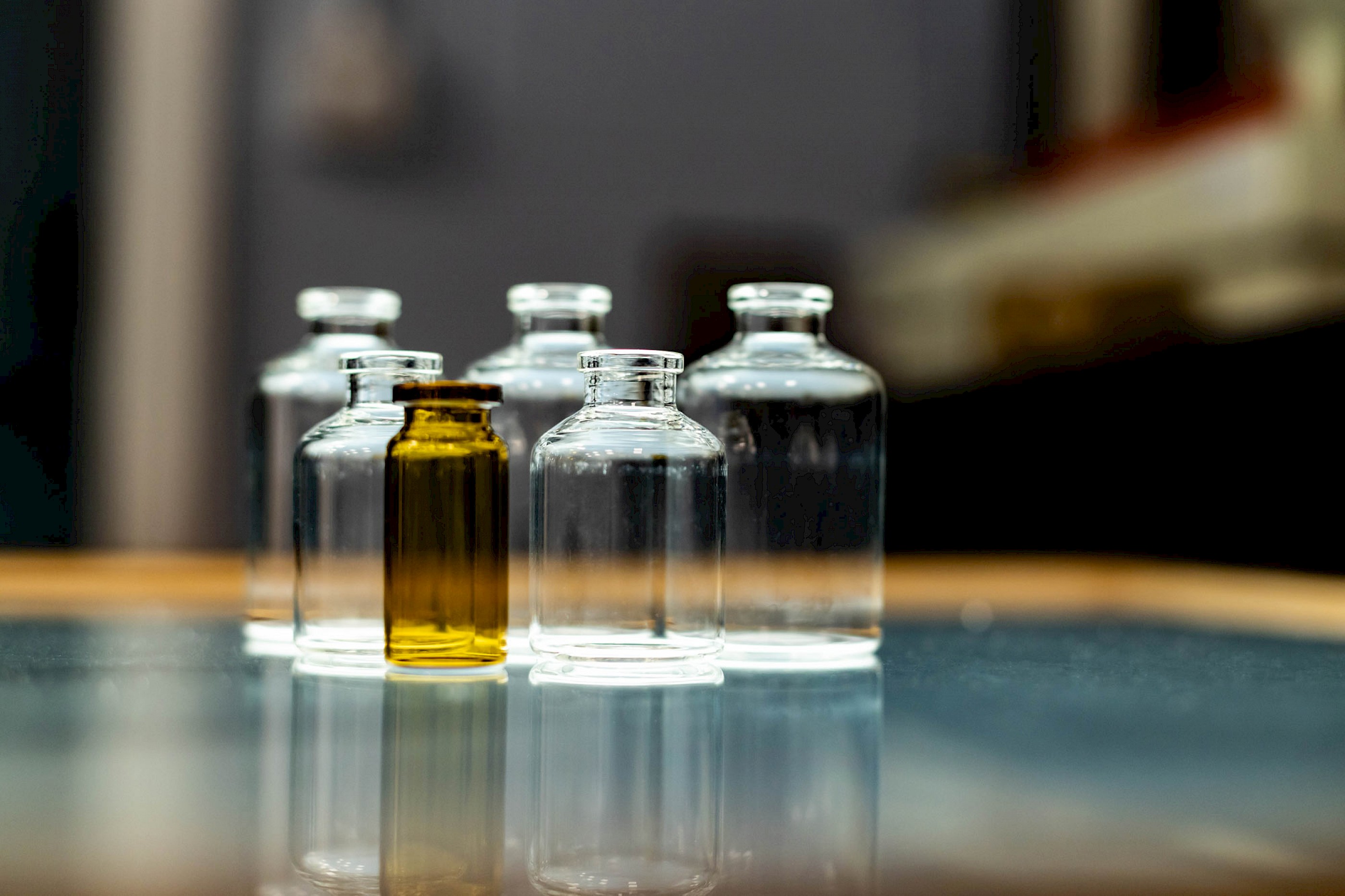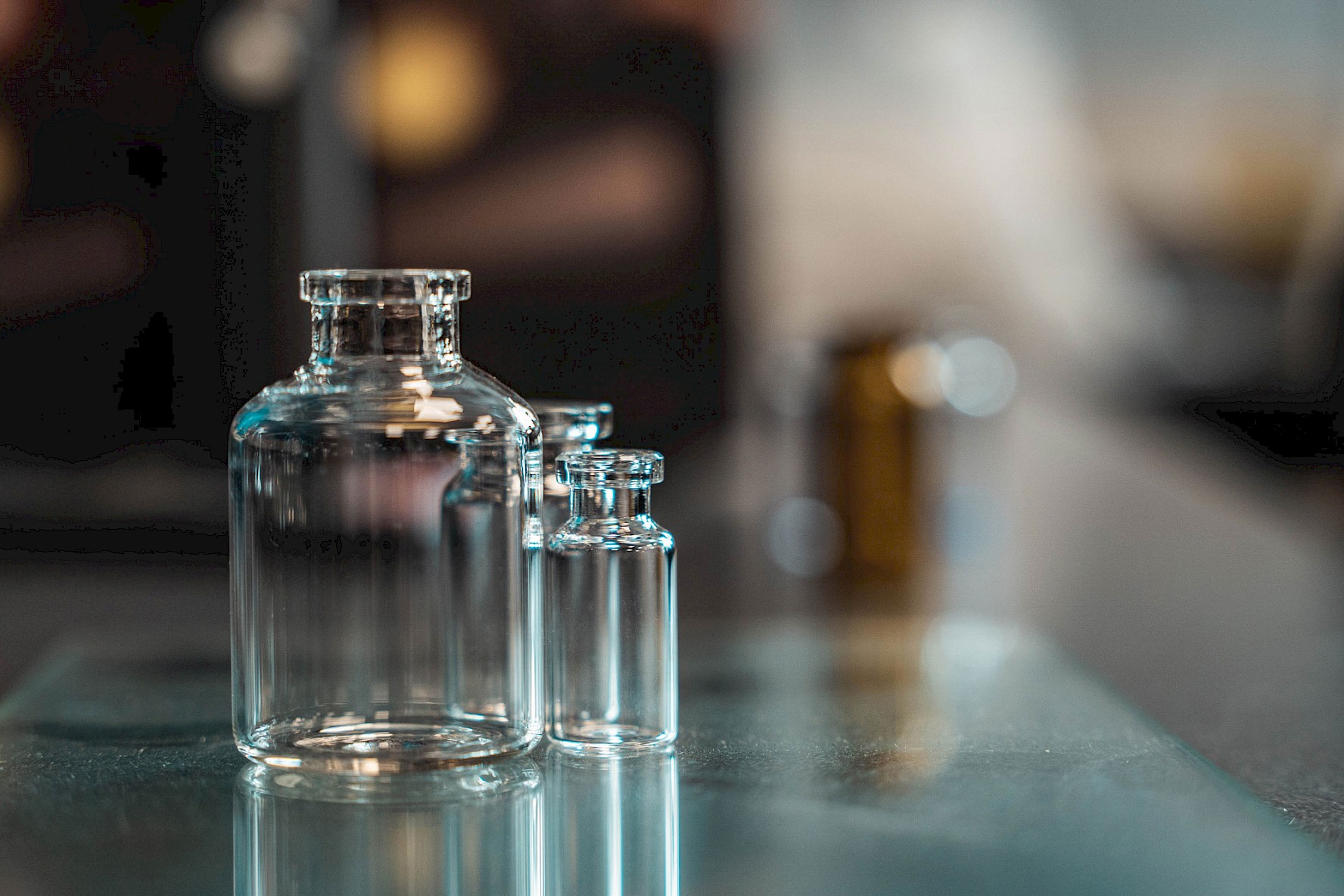Delamination of glass occurs when visible flakes or glass lamellae appear in glass. It’s a common cause of product recall, at a great cost to manufacturers.
We offer both investigative glass delamination analysis if delamination is suspected, and propensity glass delamination studies for assessing a product’s potential delamination risk.
Our evaluation includes the suggested approach detailed in the United States Pharmacopoeia (USP General Information Chapter <1660>, 'Evaluation of the inner surface durability of glass containers') and referred to in the European Pharmacopoeia/Pharmacopée Européenne (EP) Chapter 3.2.1.
View our delamination screening packages.
Our expert glass services include
- analysis and investigations where delamination is observed or suspected
- compatibility screening of primary packaging options, such as glass vials
- contract analysis – including evaluating the inner surface durability of glass primary packaging, particle/flake filtration, filter paper observation, and both scanning electron and optical microscopy imaging
- accelerated attack protocols to predict the effect of long-term storage
- long-term and accelerated delamination propensity studies
Foreign body analysis is also available in the case of naturally occurring minerals, metals and other contaminants mistaken for delamination.
In the case of delamination of laminated flat glass, please see our product failure analysis service.
Stages of delamination analysis
We begin with an optical examination to ascertain the location and appearance of the suspected delamination as this can be key in determining the root cause. If there are glass particles suspended in the liquid, this can be filtered out. If there are particles attached to the glass surface, the glass item is carefully prepared for further examination.
We use a scanning electron microscope to examine the particles captured during filtration, and particles from the glass surface. We then undertake energy dispersive spectrometry to analyse the composition of the particles. This determines whether they are delaminated glass lamellae or other forms of product or surface contamination, which identifies how they were formed and possible options for eliminating the problem on future production runs.
Further assessments may be required to determine the root cause of the suspected delamination, such as
- full compositional analysis to confirm the composition of the glass
- pharmacopoeial testing to confirm the durability classification
- quality assessment to determine if the glass has been manufactured to specification
If the investigations fail to highlight an issue with the pharmaceutical product container, we may carry out a container/drug product interaction evaluation to determine if the issue is related to incompatibility. This involves assessing the container/drug product combination for delamination propensity.
Delamination propensity pre-screening and accelerated attack
Introduced into the USP in December 2013, propensity pre-screening assesses the risk of packaging delaminating during its life cycle under in-use conditions. This glass delamination risk assessment and pre-screening package evaluates differences in containers from different manufacturers, glass formulations, batch variations and post-forming processing and treatment conditions. It typically includes
- accelerated attack techniques with varying solutions – such as 0.9% KCl, 3% citric acid or 20mM glycine as advocated in USP <1660>, or a range of other solutions to closely reflect the specific drug products
- cyclic heating and cooling
- chemical analysis of attack solutions
- visual inspection and assessments
- inner surface evaluation
- particle filtration and analysis
Long-term delamination and stability studies
Several studies can be conducted depending on the nature of your requirements, the drug product, the market territory, and relevant regulatory and pharmacopoeia requirements. We work with you to understand your specific needs and ensure the programme of analysis and study conditions are appropriate to the product, storage and use conditions.
Studies can be carried out at pre-determined temperatures, relative humidity levels and time periods to simulate the actual or accelerated ageing of filled products to
- predict delamination propensity
- investigate the suitability or compatibility of different primary glass packaging formats, suppliers or drug formulations
View our delamination screening packages.
Minimising delamination risk
We advocate a proactive approach to minimising the potential for delamination. For pharmaceutical companies, this must always include
- the correct specification for the glass to ensure its suitability for the pH of the product
- the processing involved, including sterilisation and autoclaving
- the handling and storage conditions for the filled product
- ensuring the appropriate process controls are in place (for glass manufacturers) – including forming temperatures, the correct annealing, and due diligence in the quality testing of the glass
Quality assurance should dictate that glass quality, pharmacopoeia and durability analyses are conducted to assess the compatibility of the glass with the specific product that will be stored within the container. We regularly provide these services on both an ad-hoc and contract basis, including
- glass quality assessments to determine the forming and annealing quality
- mechanical performance, durability and migration testing using a range of simulants of different pH
- pharmacopoeia testing to verify that the glass container meets the relevant international pharmacopoeia monographs, including USP and Ph. Eur
We also offer glass production line audits to optimise your manufacturing process.
Glass composition types and delamination
- Type I – borosilicate glass – Flame working of the tubing to shape and form the finished article is an essential step in the manufacture of pharmaceutical vessels from borosilicate. However, it can cause the release of boron and sodium which then condenses onto the glass surface. There is increased prevalence of delamination at both the heel and shoulder of a vial made using this process. The glass surface is left enriched with silica with loosely attached condensates that can fall into the product within the vessel.
- Type III – soda-lime-silicate glass – Delamination can occur when the surface of a soda-lime-silica type III glass container is attacked by the liquid suspension contained within it. The constant attack of the surface can result in alkaline oxides leaching from the glass – resulting in an increase of the solution’s pH. The solution becomes increasingly alkaline, and this accelerates the process until the point at which the surface forms a silica-rich skin. This can then detach, or ‘flake’, from the surface and be observed as thin shimmering particles, or ‘lamellae’, now commonly referred to as delamination.
Further information and resources
As well as being a UKAS-accredited testing laboratory, we are also registered with the FDA under the GDUFA regulation. Our teams employ a range of analytical techniques, including
- scanning electron microscopy – energy-dispersive x-ray spectroscopy
- wavelength dispersive spectroscopy x-ray fluorescence
- glass refractive index measurement
- Fourier transform infrared spectroscopy
- inductively coupled plasma optical emission spectroscopy
- UV-Vis spectroscopy
- finite element analysis
We conform to international standards and pharmacopoeias including
- The United States Pharmacopoeia (USP), including Chapters <660>, 'Containers – Glass', and <1660>, 'Evaluation of the Inner Surface Durability of Glass Containers'
- Ph.Eur Ed – Chapter 3.2.1 – European Pharmacopoeia/Pharmacopée Européenne
- BP-Vol IV – The British Pharmacopoeia
- GOST 13905 – Russian Water Resistance Test
- JP16 – Japanese Pharmacopoeia 16th Edition
Glass delamination studies leadership and expertise
We have over 40 years’ combined experience performing chemical and pharmaceutical testing for world-leading brands in the glass and pharmaceutical industries. Our experts have published several scientific papers in this field and are members of the TC2 and TC12 technical committees.





